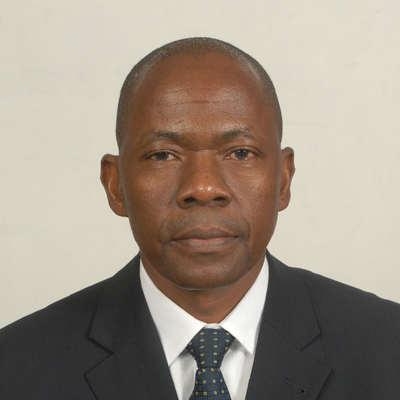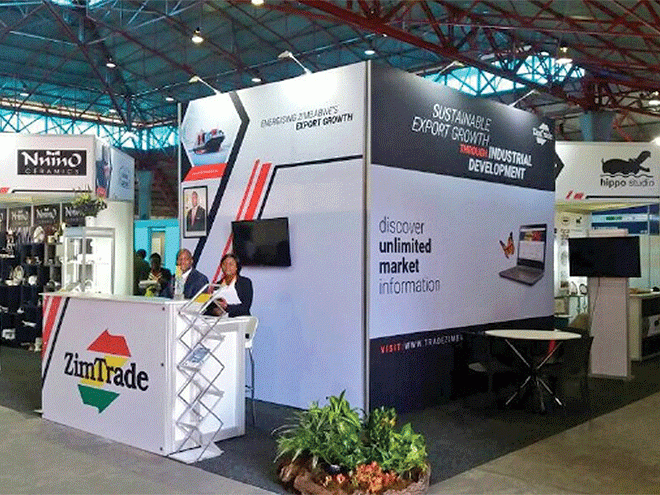
The Monthly Financial Sector Bulletin (MFSB) publishes The Microfinance Interview a monthly question-and-answer feature through which we engage key stakeholders of the sector such as MFIs, funders, service providers, development partners and regulatory authorities among others on issues of topical and mutual interest. In this eighth instalment, the spotlight is on Mustard Seed Consulting (MSC) a key service provider to the microfinance sector which provides technical assistance (TA). Petronella Chigara-Dhitima (PC-D), MSC’s managing director recently talked to NewsDay financial columnist Omen Nyevero Muza (ONM) about a wide range of issues including licensing, regulatory, capitalisation and sustainability aspects of the microfinance sector. Below are excerpts of the interview:
Financial Sector Spotlight: OMEN MUZA

ONM: What’s your view on the number of MFIs in Zimbabwe and what advice would you give to the licencing authority about this?
PC-D: In purely market driven economies, one would say there is no maximum allowable number of MFIs in any market. In this vein, market forces will dictate who survives and who gets swallowed up in mergers and acquisitions. Ours though, is not such a perfect economy and as a result even the tiny ones, which are barely reaching the minimum threshold to make their business profitable are still trudging on. Given the size of our market (population of less than 13 million, in fact much smaller when considering adult population that is financially active), 180 is certainly too many. I would recommend licensing on exceptional basis for example deposit-taking MFIs or credit-based MFIs that bring in larger investments than the $25 000!
ONM: Credit-only MFIs are required to have a minimum of $25 000 while deposit-taking MFIs must put up $5 million in capital. Do you think these capital levels are appropriate given the current structure of the MFI sector in Zimbabwe?
PC-D: Firstly, the gap between the two is too wide — it doesn’t even sound like these are players in the same industry. The second issue is to do with economies of scale. What kind of operation would a $25 000 MFI run professionally and profitably? The result is exorbitant interest rates to compensate for the volumes they can’t make.
ONM: In terms of sustainability of MFIs, what are the key ratios?
PC-D: Generally speaking, MFIs are expected to be profitable just like any corporate business is — so Return on Equity (ROE) is a standard measure. In addition, in some markets where microfinance was highly donor dependant, the industry coined two sustainability indicators — Operational and Financial Self Sufficiency. The first one — Operational Self Sufficiency (OSS) simply means the MFI is able to cover its operational and financial costs from its own internally generated funds. Financial Self Sufficiency (FSS) is similar to OSS, but includes the adjustments e.g. to operational and financial costs to show how sustainable the MFI is when subsidies are taken away.
- Chamisa under fire over US$120K donation
- Mavhunga puts DeMbare into Chibuku quarterfinals
- Pension funds bet on Cabora Bassa oilfields
- Councils defy govt fire tender directive
Keep Reading
ONM: In a nutshell, what must be done in order to improve these ratios?
PC-D: Profitability is driven by portfolio size which results in efficiency. Microfinance is inherently inefficient since it deals with much smaller loans than banks. For an MFI to build a portfolio of $$5 million demands a lot in terms of human capital since its spread over many clients. Operating efficiency (which is operating expenses divided by average loan portfolio) for MFIs in mature markets is single digit (3-5%), while here in Zimbabwe it’s above 30%! The major reason is the size of the outstanding portfolio. I honestly wonder how MFIs with $100 000 expects to be efficient, let alone be profitable. I suppose that’s why they end up charging high interest rates. There is a threshold of economies of scale that should be reached by any MFI to continue in business profitably.
ONM: Is regulatory capacity for the microfinance sector adequate in Zimbabwe?
PC-D: I guess the numbers involved make it difficult for regulatory authorities to supervise. The effectiveness of regulation is in the power to supervise and penalise and if the regulatory authorities cannot effectively supervise all institutions, there may be breach of regulations that goes unnoticed.
ONM: What have you got to say about the oft-expressed view that most MFIs sorely need capacity development, but the available technical assistance is too expensive for the majority of MFIs?
PC-D: The statement is directly related to the type of institutions we are licensing. Definitely a $25 000 MFI (or anywhere below
$1 million) may not have the financial ability to attract the technical expertise needed to manage the MFI, which means they hire people with no experience who require training and grooming. However, the size of the balance sheet does not allow them to contract consultants such as MSC as well. The serious players know that such TA is needed and are willing to pay for it.
ONM: What are some of the capacity development programmes available locally for people in the microfinance sector?
PC-D: MSC, together with HIT and ZAMFI launched a microfinance diploma course in 2016. Since then various schools have come up with similar courses. The local association [Zamfi] runs a number of courses annually including the just-ended winter school. MSC on its own also runs a number of courses throughout the year for middle and senior managers.
ONM: What other roles can the association of microfinance institutions play in addressing the capacity development needs of the sector?
PC-D: In many countries, the microfinance association plays a critical role in linking the local sector to the global initiatives. Currently Social Performance and MFI accreditation to be SMART Certified have become topical issues. Getting MFIs to know such industry-wide developments and pooling resources to facilitate such accreditations or exposure to such initiatives is really critical. Zimbabwe has been missing from the MIX market for many years now and the association could also play a role in stimulating interest and highlighting benefits to members. Providing a snapshot of the industry and keeping track of developments which can be documented is a great way of increasing industry capacity. The training work that is currently underway should also continue, but can include national conferences, regional summits etc.
ONM: For the benefit of the uninitiated, what is the MIX Market?
PC-D: This is a global information database that provides instant access to the data, analysis, and tools that deliver key insights into the financial inclusion sector. The data is collected from MFIs around the globe [on voluntary submission basis]. The MIX Market platform can help you assess financial, operational, and social performance of different institutions, check country statistics or perform cross sectoral analysis.
ONM: What, in your view, are the prospects of the microfinance sector in Zimbabwe?
PC-D: Growth! I believe we will see growth in this sector especially once serious players with big investments strengthen themselves in the market. Most likely the environment is going to be very competitive and it will not be surprising to see mergers and takeovers!
ONM: What’s your views on the attractiveness of the microfinance sector to big foreign/international players such as FINCA, BRAC & EQUITY?
PC-D: I believe it is very attractive partly because of current levels of investment that are low to medium. Some of these international players can easily set up entities that are capitalised above $10million and push the cost to client to lower levels. A few of these have already scouted the market! Also, local interest rates are much higher than regional rates!
ONM: How should MFIs prepare for this eventuality?
PC-D: It can’t business as usual! There is need to be strategic, to create competitive positioning in the market before it’s too late.
ONM: Tell us a little about how and why Mustard Seed Consulting was formed.
PC-D: Having worked in the sector in many different countries, the founders of Mustard Seed were convinced that Zimbabwe didn’t need more MFI actors, but rather mentors who can groom and develop MFI leadership and strengthen managerial capability. For us, the impact of working with more than one firm was much more than just creating another MFI and we still believe that. Strengthening the greatest asset that the MFI has — people — is our calling and we are passionate about it.
ONM: Anything we haven’t discussed that you would like our readers to know about yourself, MSC, or the Zimbabwean microfinance sector in general.
PC-D: I would encourage local entities to position themselves for more competitive terrain both from traditional players (like the international firms) and the fintech companies that are doing business in a more efficient way through technology! I would say “make hay while the sun shines – it won’t be business as usual soon.”
Omen N. Muza is the founder and editor of the MFSB. You can view his LinkedIn profile at zw.linkedin.com/pub/omen-n-muza/30/641/3b8 or initiate contact on [email protected].











